A young man riding a bicycle through a market rode past us and spat out a small puddle of red beetle juice. Later we came across a group of Burmese men who were working on underground sewage pipes and I noticed that their smiles were red. One of them stuck a package of something into his pocket and I asked, by motioning if I could see what it was. He had a small plastic bag with what I suspect were beetle nut mixtures wrapped in leaves. We walked to a poorer area near that edge of Mae Sot and saw many wooden huts with roofs that were made in part of leaves. Since we had not been able to go to Myawaddy we couldn't very well compare the two areas, but this was the poorest looking part of Thailand we had seen outside of the hilltribe villages.

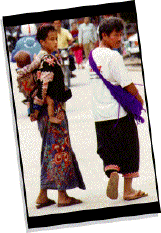
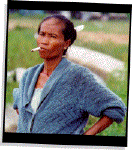
There seemed to be three separate Burmese communities in this one poor area because we saw at least two fenced in areas and a third that was much smaller, consisting merely of there huts and some land. This small compound was the residence of a cow and a newborn calf - portions of the drying afterbirth were still hanging from the cow. There was a group of young men wearing shorts and pants playing volleyball in one of the larger compounds. Most of the Burmese men we saw in this area were wearing longyis and we saw several children with their heads shaved, both boy and girl. There was a large field separating this Burmese residential area from the town proper where still more wooden homes, some on stilts where other Burmese families lived were located. There were numerous water buffalo, cows and a herd of goats in and next to this field. An eatery located next to this field also served as the movie theater for the locals who filled the building viewing some program on television.
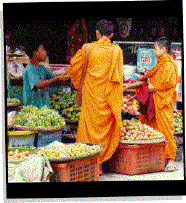
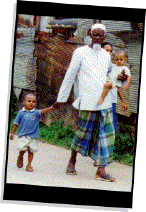

There was a cemented creek-canal that ran alongside where we were walking and we saw people there who were washing their clothes and themselves in it. Those washing their clothes made use of the cement along the sides of the canal to beat their clothes. One woman who had on a large longyi was washing her face and other parts of her body when she could. While she was washing her face she could partially open up her longyi as if to wash under it as well but had to be very careful unless she wanted everyone to see her the way only a husband might. There was a mossy looking stretch of water near the canal where a woman was working gathering something. She had a net framed with bamboo or some other wood which had another piece of bamboo attached to two sides of the frame forming an arc that stuck up from the water and allowed her to raise the net out of the water with a pole from up above on dry ground. I motioned that I wanted to see what she was collecting in the three nets and she showed me her buck of this green moss-grass. I later learned that what I could not see from my side of the canal were tiny shrimp common throughout Southeast Asia.
This was most certainly a Burmese residential ghetto, and there was probably a greater concentration of Burmese businesses right alongside Thai-run businesses that were run by the Burmese residents, and it was not an uncommon sight to see signs in both Thai and Burmese.

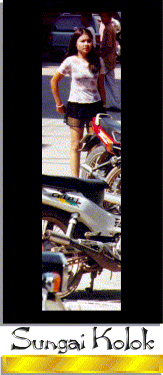
Sungai Kolok is a border town in the far South of Thailand within walking distance of Malaysia where Muslims and Buddhists live together. One of the more common sights in the town is a wood table in the front of a small store found on most streets with bottles of red and sometimes green liquid. There are no busses for commuting within Sungai Kolok, there are few trishaws, and the taxis are all motorbikes fueled by these bottles of red or green gas. There motorbike taxis are as easy to find as car taxis are in any major city of the world, and we've seen them carry about as much as one of those car taxis would carry in their trunk somewhere, somehow on the bike along with the passenger. Aside from being a stopover between countries, you can't ride on one train from Thailand to Malaysia, Sungai Kolok has one other important feature as a border town. Malaysian men are known to sneak across the border, a small river, at night from their conservative Muslim state for hired couplings with the Thai women. At the end of one street a high density of these professional women who dress more risqué than average women even during their off-hours is one of the most expensive hotels we've seen at the two border areas we visited though the expense did not appear to be match by much else.
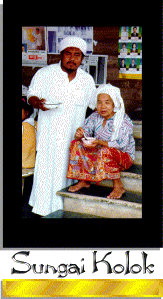

I mean no disrespect to Thailand, the Thai people, or their language by what follows which is merely an observation of one ignorant visitor to that country:
Bangkok, from inside a taxi where Thai is invariably being spoken on the radio, might be better name Kha-land. On several trips in taxis I've heard a female radio hostess repeat the word "kha" more than any word I think I have ever heard in a similar space of time in my life. ("Kha" is the Thai word for "yes" and is used to acknowledge another's monologue).

